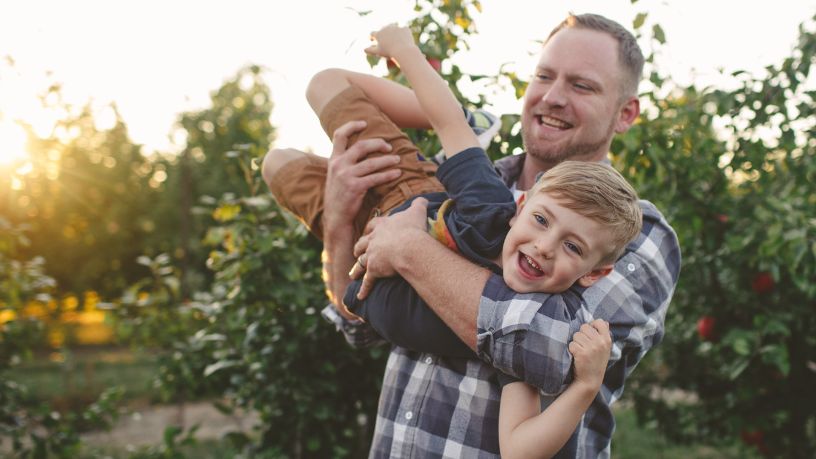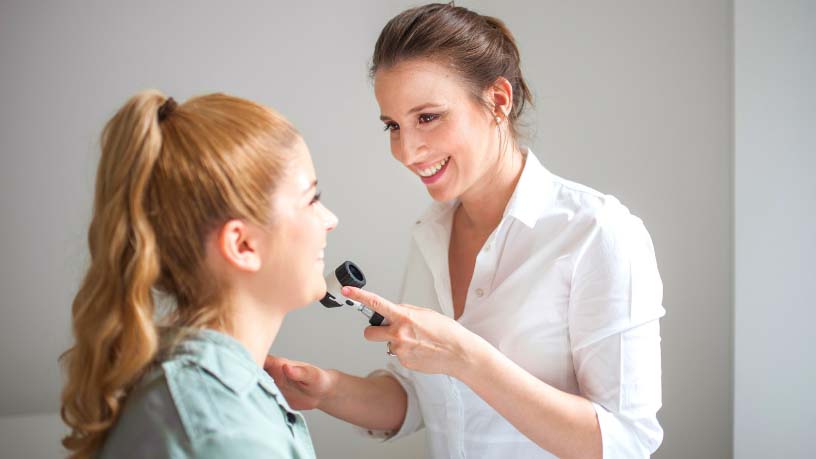Applying sunscreen on high UV days is an important part of staying safe in the sun.
Key takeaways
Sunscreen can significantly reduce your risk of skin cancer.
Discover 5 tips for applying sunscreen the right way, according to Professor Anne Cust, Chair of Cancer Council's National Skin Cancer Committee.
The Australian sun can be harsh, with the country's skin cancer rates ranking the highest in the world. So, applying sunscreen correctly is important when staying safe in the sun.
But what's the best way to approach it? And what areas are people commonly overlooking?
The importance of sunscreen
2 out of 3 Australians develop skin cancer in their lifetimes,1 and in 2023, more than 18,000 people were diagnosed with melanoma, the deadliest type.2 So, staying safe in the sun is important.
This means that on days when the ultraviolet (UV) index is 3 or higher, you should always use all 5 forms of sun protection:
- Slip on sun-protective clothing.
- Slop on SPF50 or SPF50+, broad-spectrum, water-resistant sunscreen.
- Slap on a broadbrimmed hat.
- Seek shade from the sun.
- Slide on a pair of sunglasses that meet Australian standards.3
Slopping on sunscreen can significantly reduce your risk of developing skin cancer, including melanoma and squamous cell carcinoma.4
Whether a block, cream or a non-aerosol spray, it's crucial that you apply (and reapply every 2 hours if you're outside) your sunscreen accurately and thoroughly, ensuring that it provides protection to every part of your skin throughout the day.
To help you get it right, Chair of Cancer Council's National Skin Cancer Committee, Professor Anne Cust, shares her top 5 tips for using sunscreen.
1. Make sure you use the right sunscreen
"There're lots of different brands on the market," says Professor Cust. "You can [even] get clear screens these days as well. They're all very good."
But, Professor Cust adds, choosing the right sunscreen is less about how it looks and feels and more about what it contains.
What's important is that your sunscreen is all of the following:
- broad spectrum (meaning it blocks out both UVA and UVB rays)
- water resistant (especially when you plan to swim or sweat)
- SPF50 or SPF50+.
2. Apply the right amount of sunscreen
According to Cancer Council, Australians generally aren't using enough sunscreen.
To slop on the right amount, the average-sized adult should be using approximately one teaspoon (5ml) of sunscreen per body part, or a total of about 35ml across your entire body.5
3. Apply across your entire body
The majority of skin cancer cases in Australia are basal cell carcinoma (BCC). This typically affects your neck, face, head, shoulders and back. Squamous cell carcinoma (SCC), the second most common skin cancer, likewise affects parts of your skin that tend to be exposed to the sun, which can also include your lower legs and forearms. 6
However, melanoma (a less common but much deadlier cancer) can develop all over your body, even in places that you might not expect to come into regular contact with the sun, like your scalp, ears, neck and chest.
So, whenever you're going out into the sun it's important to apply sunscreen all over.
"Most people will know the areas that they tend to forget," says Professor Cust. "If there's parts of your body that you can't reach, ask someone to help you put it on."
4. Start your day with sunscreen
For Professor Cust, creating sun smart habits is an important step in reducing your risk of damage. On high UV days, this should begin at the start of each day.
"It's good to get into the habit of applying sunscreen every day," she says.
And if you think you're going outside that day, it's good to get into the habit of just putting it on.
Professor Cust suggests applying your first coat in the morning when you brush your teeth, "so that if you're incidentally exposed to the sun during the day, you've got that base level of protection".
Cancer Council recommends applying sunscreen 20 minutes before going outside.5
5. Reapply throughout the day
Your first coat of sunscreen shouldn't be your last on high UV days. "People forget to reapply, and that's when they get burned," says Professor Cust.
You should aim to reapply your sunscreen at least every 2 hours when you're out in the sun, or directly after you swim, sweat or towel off.
"Often, it gets rubbed off in the water or with the towelling," Professor Cust warns.
Resources
Find out more information about sun safety in Australia by visiting Cancer Council's website.

At Bupa, trust is everything
Our health and wellbeing information is regularly reviewed and maintained by a team of healthcare experts, to ensure its relevancy and accuracy. Everyone's health journey is unique and health outcomes vary from person to person.
This content is not a replacement for personalised and specific medical, healthcare, or other professional advice. If you have concerns about your health, see your doctor or other health professional.
1SunSmart. (2024). Skin cancer facts & stats. SunSmart.
2Cancer Council. (2024). Melanoma. Cancer Council.
3Cancer Council. (2024). Preventing skin cancer. Cancer Council.
4Cancer Council. (2024). Fact sheet: Sunscreen. Cancer Council.
5Cancer Council NSW. (2020). 5 steps to applying sunscreen correctly. Cancer Council NSW.
6Cancer Council. (2024). Non-melanoma skin cancer. Cancer Council.
You might also like...
Your guide to sunscreen and SPF
You may know that sunscreen provides protection from the sun, but have you ever wondered how it works? Figure out which sunscreen is right for you.
Suntanning culture
Australia has the highest skin cancer rate in the world, but that doesn’t stop us from suntanning. Learn about the dangers of laying out in the sun.
Sunburn: Everything you need to know
The occasional sunburn might seem like an everyday part of Australian life, but do you know how much damage it could be doing to your skin and your health?
Skin checks: Everything you need to know
Skin cancer is common in Australia, but early detection can significantly decrease your risk of a serious outcome. Discover different ways to check your skin.





